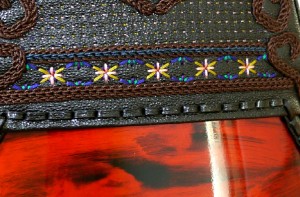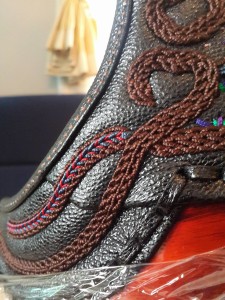The Flower of Phnom Penh
Last Monday morning (2nd of May), I was awoken by a phone call from the post office notifying me of the arrival of a package from Japan. I immediately knew it was from him!
I went off to the EMS office and gave them the number of the package. Moments later, they took out a semi-large box!!
I held my breath.
With excitement and apprehension, I watched the Customs lady unseal the box and take out a heavily bubble-wrapped item from within. With eyebrows knotted and a face in puzzlement, she turned to me and asked, “What is this?”
I was screaming inside my head. It’s too good to be true! It can’t be, it can’t be! …but there it is! I calmly took out my phone and showed her my wallpaper and pointed at my sensei’s dou.
“Oh, kendo!” she remarked, and walked away.
Well, that was more shocking than the box opening, I thought! She knows what kendo is!
As I was about to repack the item back in the box, I noticed an envelope tucked away within the wrappings and took it out. In it contained two letters: 1) a short English letter, and 2) a very lengthy one in Japanese!
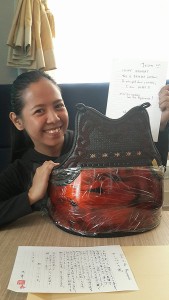
This compelled me to go to Ripple Cafe (instead of going home) and seek the help of Akiko, the manager, to translate the letter for me.
After reading silently for some time, Akiko asked me if my friend is an old man. She noted that the tone of the writing is somewhat archaic and she found it immensely difficult to translate it (apart from the kendougu jargons), remarking that people don’t normally speak that way. But she did her best to read it for me in English and it turns out that the letter is an explanation of the design elements in the dou. It even has a name:
“The Flower of Phnom Penh.”
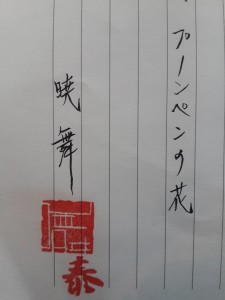
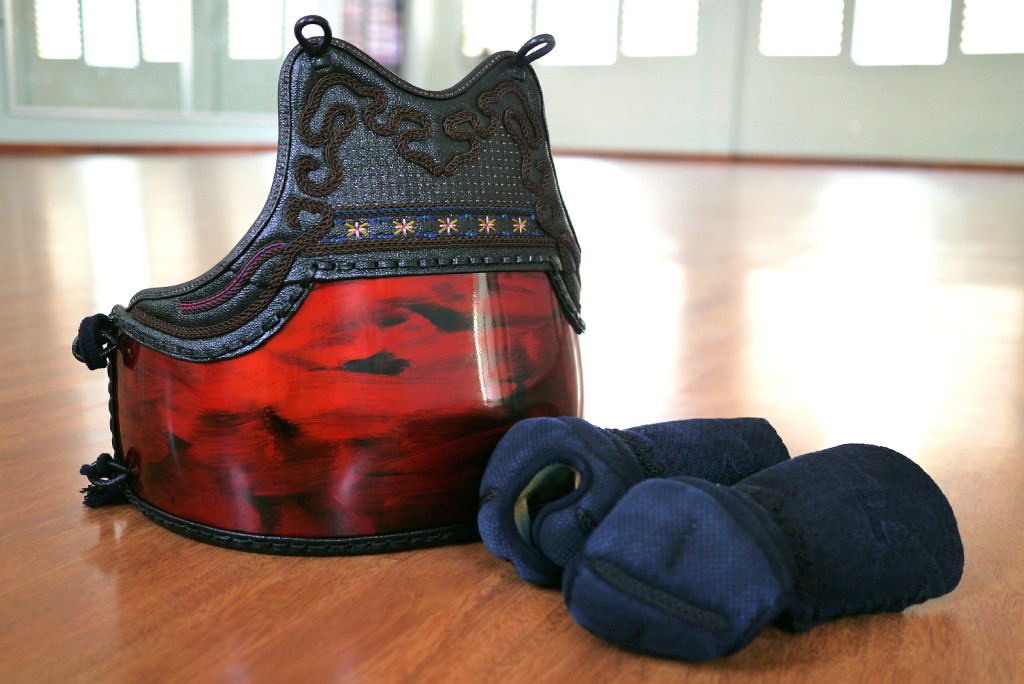
“The Flower of Phnom Penh” by Akatsuki Mai. https://www.instagram.com/mai_akatsuki/
Every little detail in the design has a significance. The main theme of the dou is Cambodia.
First off, the dou mune (top part of the dou covering the chest) consists of two separate pieces sewn together, wherein the dou leg is attached to the main body. I have never seen such style done before, and it is a real privilege that this dou bears this unusual style.
Next, the Kanto matsu kazari (pine tree designfrom Kanto), which is the main decor on the dou mune, symbolizes good fortune (from what he told me ages ago) and he had attempted to portray the Angkor Wat through its shape, which explains why he chose a brown thread color for this.
Within the dou mune are these colorful pastel dots, which symbolizes the stars in the night sky, as if seen from a window (according to him). Beneath the stars are the flowers of Phnom Penh. What those flowers exactly are ‐‐ I do not know ‐‐ but they are beautifully sewn together. This dou mune is undeniably made to look feminine with the presence of these flower thread work of various pastel colors.
Then on the ko mune leg, on the sides of the dou, is a decoration utilizing the colors of the Cambodian flag, plus brown thread. He tells me that he chose Tokyo Blue and Jyabara (snake belly) red threads.
He used two kinds of leather for the dou mune and these are the honkurozan (lacquer coating leather), which is a textured leather he used for the front of the dou mune, and the kuronameshi (lacquer coating tanned leather), a smooth leather he used for the back side, which is waterproof, ergo safe from my inevitable sweating during keiko, thus making this bogu more durable from wear and tear. This side of the dou mune hides the face of an ogre, which he claims will protect me and serve as my guardian during a fight and, he tells me jokingly, serves as an amulet so that I will win my battles. You can see the outline of his eyes and nose clearly from the back than from the front.
Finally, the dou dai (the bottom/belly area of the dou) is this beautifully painted, metallic red and black gloss, which visibly shows you the brushstrokes of the craftsman (a different one), which my friend describes as a storm cloud.
I found that bit of detail very interesting, because here you have the dou mune, which is subtly feminine, and then you have this “screaming bloody murder” dou dai, which strikingly contrasts the supposedly quiet simplicity of the dou mune. You can derive countless of interpretations out of it, but I really liked that he called it a ‘storm cloud,’ because that’s what I’ve been calling the dou since then, and in our recent exchanges, we have been referring to the dou as “Storm Cloud & Ogre” (and I, the “Storm Rider.”)
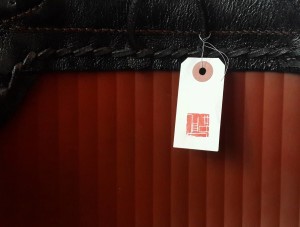
He had opted for a plastic, Yamato 50‐piece dou dai instead of bamboo because he states that the latter is not suitable for high temperatures and high humidity.
It is a truly beautiful thing ‐‐ this dou ‐‐ and I marveled upon it for a long time at the cafe as I admired the thread work and the overall appearance of the thing, suspended in disbelief to receive such a remarkable work of craftsmanship. It makes me unwilling to use it for regular keiko because it is such a precious piece of art for me ‐‐ his own handiwork ‐‐ although it is clearly meant for me to wear for regular training: he had carefully chosen the materials to ensure it will last me a long time in this climate, and had chosen the theme and decorations with me in mind, in a way. This dou somehow reflects how he sees me; ergo this dou is somewhat a portrait of me.
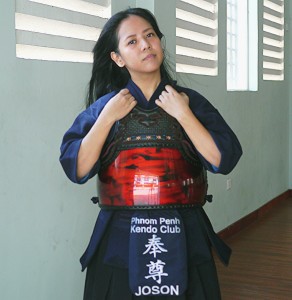
[This post is heavily edited for reasons I cannot disclose]
